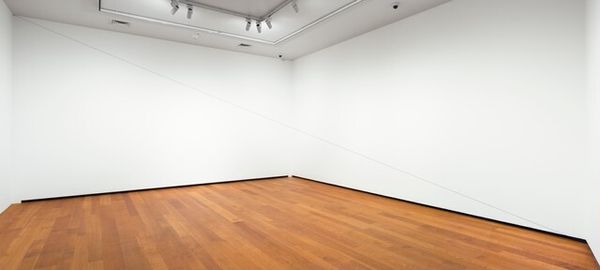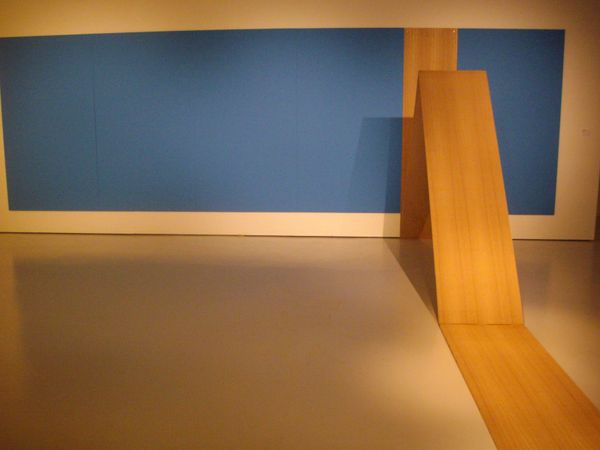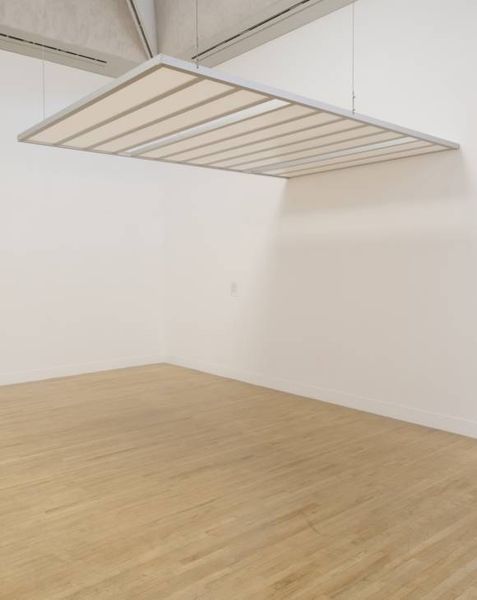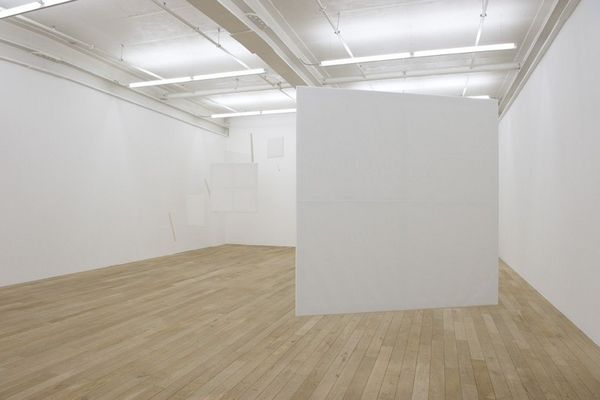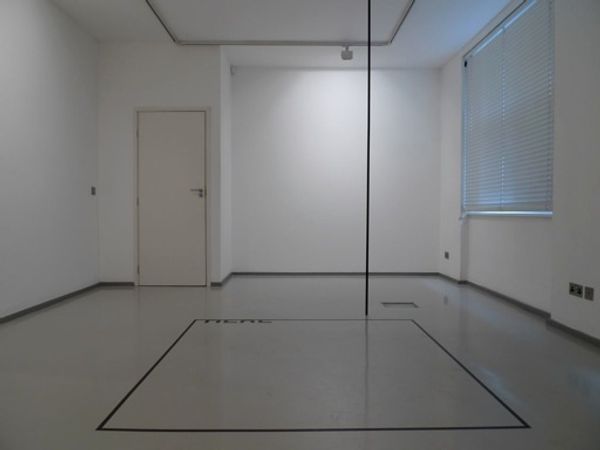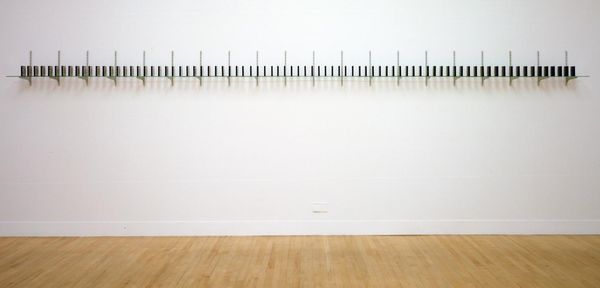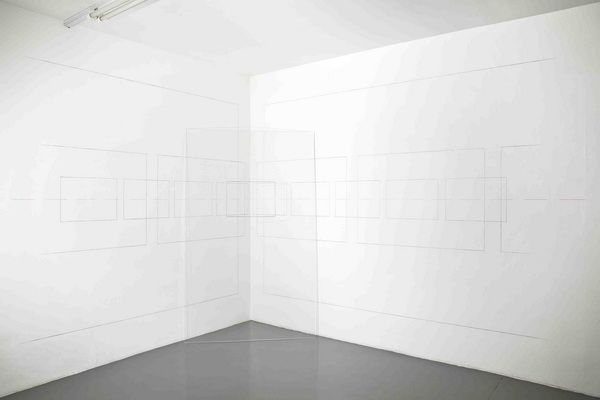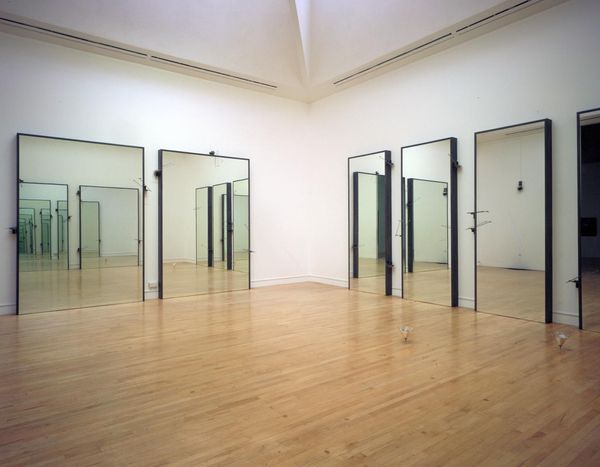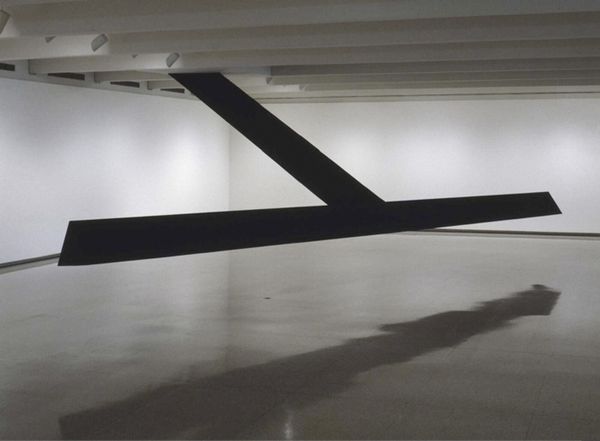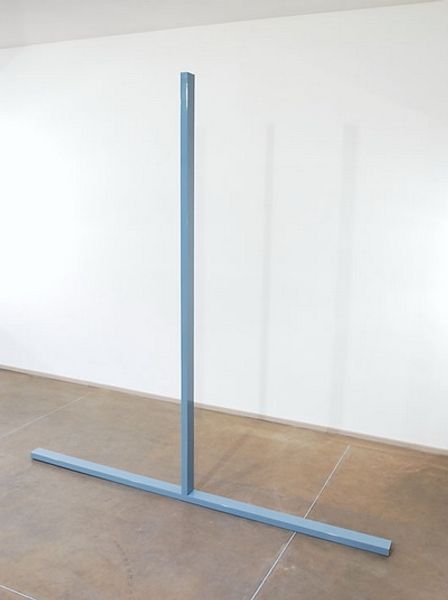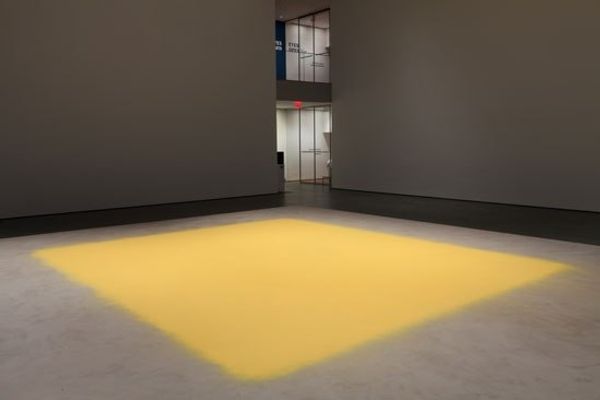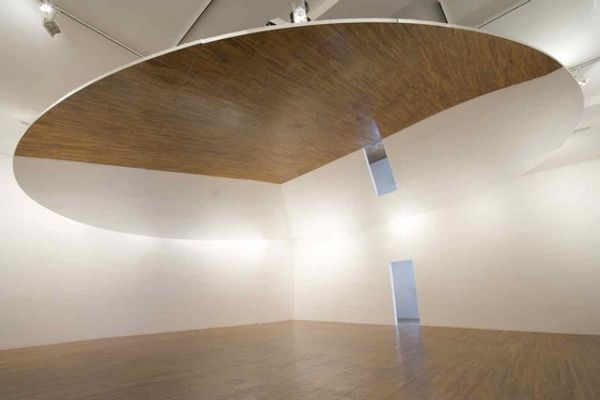
Copyright: Yoko Ono,Fair Use
Editor: We’re looking at Yoko d’Holbachie's "Waterdrop Painting (Version 1)" from 2015, a site-specific installation made with metal and glass. The scene has a clinical feel... a glass container suspended above a dark circle on the floor. What can you tell me about this piece? Curator: This work draws heavily from the Light and Space movement, but I think it’s crucial to look at the gendered dynamics at play. D'Holbachie seems to be engaging in a feminist critique of minimalist aesthetics that dominated the 20th century. The single, suspended form challenges the masculine authority often associated with large-scale, imposing minimalist works. What does this 'waterdrop' evoke for you? Editor: I guess I see a kind of scientific precision, maybe referencing laboratory settings. There is a sense of anticipation or suspended time. It almost feels like a threat. Curator: Exactly. That tension is palpable. Considering feminist readings of architecture, how might this seemingly simple "waterdrop" destabilize our understanding of domestic space and the historical association of women within those spaces? Editor: So, the precision is deceptive. Is it meant to critique not only minimalist aesthetics, but also perhaps, the objectification and control implied within scientific and domestic environments? Curator: Precisely! And I’d like to emphasize d’Holbachie’s position as an Asian-identified woman, and the intersectional understanding of Minimalism and the critique of a predominately white and male arena in art, which had influence on her work. Considering Minimalism’s own problematic lack of acknowledgement of earlier movements from non-Western cultures. What implications arise when thinking about art from non-western background? Editor: That brings another dimension to this piece! I see now how this seemingly quiet work opens up into such larger societal conversations. Thank you. Curator: Indeed. It's a potent reminder of how even the sparsest forms can be dense with cultural meaning. This challenges us to broaden the historical and sociopolitical conditions in contemporary art.
Comments
No comments
Be the first to comment and join the conversation on the ultimate creative platform.
